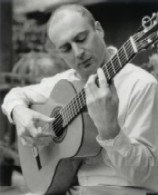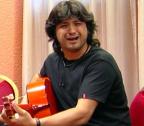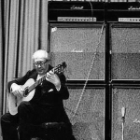Welcome to one of the most active flamenco sites on the Internet. Guests can read most posts but if you want to participate click here to register.
This site is dedicated to the memory of Paco de Lucía, Ron Mitchell, Guy Williams, Linda Elvira, Philip John Lee, Craig Eros, Ben Woods, David Serva and Tom Blackshear who went ahead of us.
We receive 12,200 visitors a month from 200 countries and 1.7 million page impressions a year. To advertise on this site please contact us.
|

|
|
RE: Specs in a guitar plan
|
You are logged in as Guest
|
|
Users viewing this topic: none
|
|
Login  | |
|

   
estebanana
Posts: 9351
Joined: Oct. 16 2009

|
 RE: Specs in a guitar plan (in reply to Echi) RE: Specs in a guitar plan (in reply to Echi)
|
|
|
All string instruments are developed historically on one major factor, string technology. The string drives the development of the instrument. The one major deviation from this was Torres who changed the guitar rapidly because the instrument could bear being scaled up because the string could handle it.
The cello and violin developed the same way, they changed because the string technology improved. There was one major deviation in that instrument family also, the neck of the violin changed. The violin remained the violin, there was no new and old violin, the set up style changed. It affected the strength of the instrument.
The guitar changed again with nylon strings, it scaled itself to a new string technology, and it opened a new possible range of technique for the player. The player stepped into a new string world, not the guitar stepped into a new playing world.
The last iteration of the Spanish guitar before Smallman changed the instrument without a new string was nylon redesign, and that coupled with new problems of mass production longevity moved the guitar to be overbuilt.
What independent makers have been doing, is undoing the damage.
_____________________________
https://www.stephenfaulkguitars.com
|
|
|
|
REPORT THIS POST AS INAPPROPRIATE |
Date Feb. 12 2018 23:51:51
 |
|

   
Echi
Posts: 1132
Joined: Jan. 11 2013

|
 RE: Specs in a guitar plan (in reply to Echi) RE: Specs in a guitar plan (in reply to Echi)
|
|
|
quote:
The obvious reason Vicente or anyone else don't play a Santos is that Santos has not produced a guitar in 75 years. So any argument based on artists choice is a straw man argument. It moves the goalposts on the objective of the study of Santos. Further the idea that there's a new guitar and an older style flamenco is also a dubious argument; a straw man revisionist view of guitar history can't change that
You can have any take on it based on video or small sample size equivocating opinions, but the guitar did not substantially change at all. They simply became slightly overbuilt. That's all it is. I'm sorry but you're just wrong.
You cannot make an argument based on one player, ( small sample) or move the goalposts by saying artists don't play older guitars because they don't have the power. It's absolutely wrong. [...]
The guitar is the Same its just 10% over built. If you don't understand that you're not getting the guitar at all. Selling the concept that the guitar changed is a market strategy.
In advance, let’s take it easy. At the end of the day it’s just a matter of different views and opinions.
Coming to your post, I didn’t use a straw man here as I’m not speaking of a certain player preferring a Reyes to a Santos in order to come to entail that Reyes is better than Santos or things like that. I said something else (old and new flamenco, old sound, new sound) that for me as for many in Spain is very evident. There’s a chance I may be wrong but this is my actual though about it.
All the top players in Spain (name them) in these days mostly play either Reyes or Conde and it’s not because of unavailability of Arcangels, Barberos etc. Nobody can say for sure the reason why people like Gerardo, Antonio Rey, Tomatito, Vicente, Paco, Guerrero, Valencia etc. don’t play a Barbero or a Santos.
In my opinion more recent guitars are not better, but as you say, are overbuilt than the old masters guitars (or the old ones are underbuilt for the actual demand). We can just guess. You say it’s a market strategy but this must have been a successful strategy. .
In my opinion is a straw man to say that the good players keep the good guitars at home to save them or that there is not availability of old guitars (it’s not the same for Violins ?) or that the actual players are not able to discern or things like that.
I agreed with you that everything was already present in the making of Santos and possibly that we must understand better Santos as many makers are rediscovering Torres. Nonetheless it seems to me that it happened an evolution.
Coming to my case, I recently played a 1963 Reyes. Fantastic guitar, very Santos made, but very different from the recent Reyes I tried some months ago. If that guitar was perfect, why Reyes himself changed his way to build? Possibly the demand was for a bigger guitar and Reyes used to sell guitar for a living.
A famous professional player tried the very same old Reyes (belonging to a friend) in a masterclass and my friend took a video of him playing: he kept saying that the guitar is like Santos, the good old sound etc. Then he put it down apparently without a particular interest. The same way that a motorbike aficionado would look to a good old motorbike.
Let’s be clear: I wouldn’t say that the more recent Reyes are better. I wouldn’t say either that it’s just the same old guitar but the 10% overbuilt. To my ears that guitar sounded like something different, for good or bad.
|
|
|
|
REPORT THIS POST AS INAPPROPRIATE |
Date Feb. 13 2018 8:07:10
 |
|

   
RobF
Posts: 1611
Joined: Aug. 24 2017

|
 RE: Specs in a guitar plan (in reply to JasonM) RE: Specs in a guitar plan (in reply to JasonM)
|
|
|
Hi Jason, here is a quick take on a straightforward way to do the assembly, I don’t actually do it this way but I’m confident it’s going to work.
First, in this method, the edge of the sides meeting the top are kept flat and the taper will be defined on the edge of the side that meets the back.
For the workboard, take a piece of stable plywood about 3/4” thick and cut it out with the body area wide enough to accommodate whatever back joining method you choose and with a 3” wide neck extension protruding 320mm out from the 12th fret portion of the plantilla. Then cut a piece of high ply 1/4” plywood in the shape of your plantilla, giving it a few mm extra width but keeping the 12th fret line accurate, and laminate it to the body portion of the workboard. Draw the the shape of the plantilla on this.
The result of this will give you a workboard which has the body portion sitting 1/4” proud of the neck extension. Now, to obtain a neck rise of 1.5mm, for example (but a reasonable rise to choose), make a shim out of MDF about 1.5mm less thick than the thickness of the body lamination and tape it to the nut end of the neck extension. If you use 1/4” ply for the body lamination the shim should be a little less than 5mm thick. The beauty of using a shim is you can easily adjust the neck rise in subsequent builds by changing the shim.
Even if you want to build flat, I would recommend doming the lower bout portion of the body to about 1.5mm under the bridge. That’s still pretty flat looking. The laminations of the high-ply lamination can be used as witness lines to show the symmetry of the dishing. Only dish the lower bout area to about 2 to 3mm inside the outline of the body. This will allow you to keep the sides flat but will bring the dome to inside the width of the liners.
For your body taper, dimension the sides to be about 2mm less than the body depth at the end block. Joint the top edges but the back edges are ok as they are off the saw. When the sides are bent and dimensioned to fit the body join them to the top - flat - and attach the end block.
Now for the taper. At this phase in your career I think you won’t regret ordering or making a 15’ radius sanding dish. You can always sell it later. I know a lot of builders scoff at using dishes, but this will get you to your goal with the least headache, IMO, and more importantly will enable a good, solid attachment of the back to the sides.
Mark the sides at the heel to be about 1 to 2mm shallower than the desired overall depth at the heel. If measuring from the inside make that 3 to 4mm. The reason it’s less than the overall depth is because the top and back will each be adding about 2mm to the depth. Don’t stress if the body depths are a little off from the plan’s.
Now, if you’re going to use a dish to obtain the final shaping, take a block plane and taper from the upper bout side of the waist to the marking at the heel. Be mindful to plane with the grain when doing this. Then take the sanding dish and rest it on the sides. You’ll see the taper you planed into them has already done a lot of the work for you. It’s helpful to mark the edge of the sides with chalk to show when all of the edges have been hit by the sanding board. Also periodically measure around the sides while sanding to ensure you are keeping consistent dimensions on the treble and bass bouts.
Once the taper/dome has been established, attach your liners to be about 1mm proud of the side edge and once dry, resand. You now have tapered sides ready to accept the back.
Also, using the dish presumes the back braces will be radiused to 15’. That’s a new discussion, but it’s dead simple and fast to do that with a block plane.
Hope this helps. It’s just one way to go about this, but it should get you your guitar without too much fanfare. I have to get back to the shop so I’ll proof-read this later to make sure I haven’t messed up any of the measurements. But the method is sound.
|
|
|
|
REPORT THIS POST AS INAPPROPRIATE |
Date Feb. 14 2018 14:43:14
 |
|

   
Tom Blackshear
Posts: 2304
Joined: Apr. 15 2008

|
 RE: Specs in a guitar plan (in reply to mqbernardo) RE: Specs in a guitar plan (in reply to mqbernardo)
|
|
|
quote:
i keep the dome around 10 mm from the edge of the plantilla (like courtnall and others). it leaves space for the rims and peones, which are easier to accommodate.
I think it's acceptable to say there is not much taper the way I build with the top right side up, so there is no real trouble for the lining, especially since the top taper is not actually domed under the bridge in the first place, only extended to a certain lift at the bottom and then slightly tapered down around the sides to be flat across the top in front of the bridge.
The taper around the sides, from the bottom, gives the appearance of a slight dome behind the bridge. And then the string torque finishes off the appearance that gives the bridge area its own slight dome, without actually having to create a dome to begin with.
This is accomplished with the bridge being slightly curved when installed on the top.
So, if Reyes dished out his solera at the bottom to provide a slight taper then this goes against my idea of leaving the top flat to improve certain sustain and power.
Certainly it is secured as the way for most builders to operate but I have found it is very interesting to build the flat top, as a way to improve sound.
So can my flat top be regulated for a solera....Yes, as it doesn't require any dishing out on the work board, only lifted at the bottom by tapered shims and then gluing in the individual linings that go around the sides on a taper.
Reyes dished out his work board at the very bottom which crimps the top toward the bottom. This works but I believe to leave the top free to vibrate gives better sound capacity.
_____________________________
Tom Blackshear Guitar maker
|
|
|
|
REPORT THIS POST AS INAPPROPRIATE |
Date Feb. 15 2018 22:39:00
 |
|
 New Messages New Messages |
 No New Messages No New Messages |
 Hot Topic w/ New Messages Hot Topic w/ New Messages |
 Hot Topic w/o New Messages Hot Topic w/o New Messages |
 Locked w/ New Messages Locked w/ New Messages |
 Locked w/o New Messages Locked w/o New Messages |
|
 Post New Thread
Post New Thread
 Reply to Message
Reply to Message
 Post New Poll
Post New Poll
 Submit Vote
Submit Vote
 Delete My Own Post
Delete My Own Post
 Delete My Own Thread
Delete My Own Thread
 Rate Posts
Rate Posts
|
|
|
Forum Software powered by ASP Playground Advanced Edition 2.0.5
Copyright © 2000 - 2003 ASPPlayground.NET |
0.109375 secs.
|


 Printable Version
Printable Version











 New Messages
New Messages No New Messages
No New Messages Hot Topic w/ New Messages
Hot Topic w/ New Messages Hot Topic w/o New Messages
Hot Topic w/o New Messages Locked w/ New Messages
Locked w/ New Messages Locked w/o New Messages
Locked w/o New Messages Post New Thread
Post New Thread